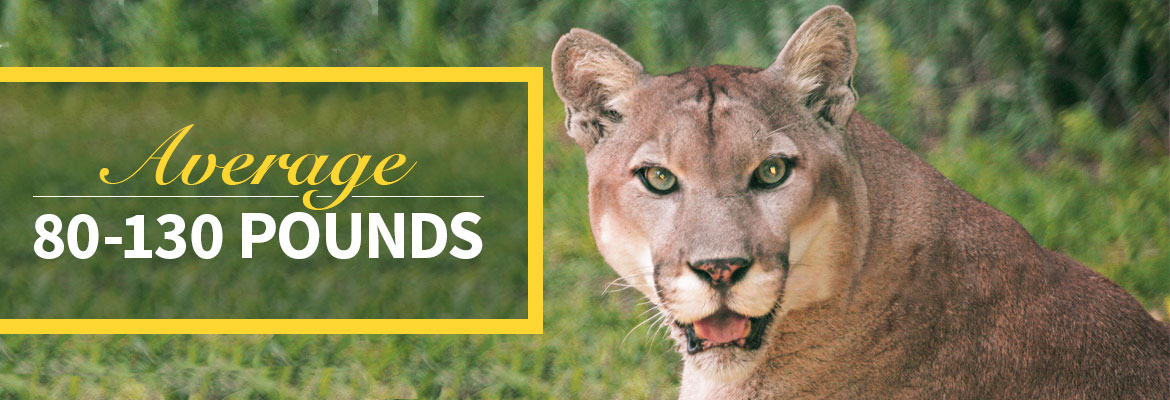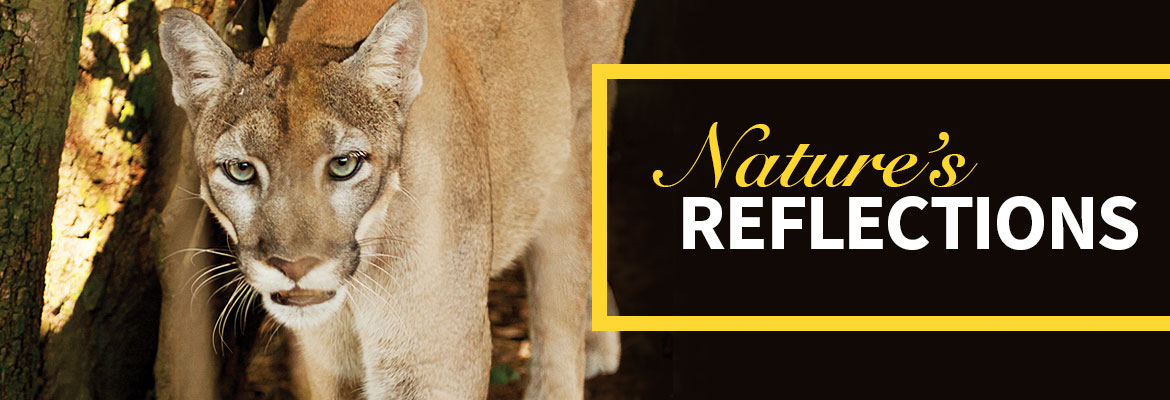Nature’s Reflections – Florida Panther: Our Biggest Cat
A subspecies of the western cougar
The Florida panther (Felis concolor corti) was first listed as an endangered species in 1973 and protected by both state and federal laws. These large, tawny-colored, long-tailed, elusive cats average 80-130 pounds. They are reported to live about twelve years in the wild. These large cats are mostly nocturnal and rarely seen. Panthers are solitary, skilled hunters who live and hunt in large home ranges up to 200 square miles. They maintain boundaries by scent markings and rarely fight over territory. Deer and feral hogs are the preferred food, but panthers also eat raccoons, rabbits, armadillos, alligators, fowl and other small animals.
Habitat loss and collisions with vehicles are the principal reasons for population decline. In the early 1990s genetic defects from inbreeding and mercury poisoning also threatened their survival.

In 1995, Florida imported eight female Texas cougars to breed with the panthers and strengthen their genetic diversity. The kittens produced from the cross-breeding are considered Florida panthers and protected the same as the purebreds. Today, panthers roam remote swamplands like the Everglades National Park and Big Cypress National Preserve. Others go mostly undetected, roaming remote areas in central and north Florida, making it difficult to get an exact count. Female panthers begin breeding at about two and a half years of age. After a three-month gestation period, a litter of one to three kittens are born in a simple, secluded den. Spots on their tawny coats help them blend with dense vegetation. Weaned at two months, the kittens follow their mother for up to two years to learn hunting and survival skills. Once trained, the mother leaves her kittens at a kill and doesn’t return, leaving them to make their own way.
Current plans focus on securing and enhancing available habitat and breeding panthers in captivity, then reintroducing them into the wild. Let’s hope endeavors to help save this symbol of Florida’s wilderness are successful.
Column & photo by: Sandi Staton






